A system is taken from state a to state c by two paths adc and abc as shown in the figure. The internal energy at a is Ua=10J.Along the path adc the amount of heat absorbed δQ1=50J and the work obtained δW1=20Jwhereas along the path abc the heat absorbed δQ2=36J The amount of work along the path abc is :
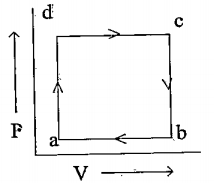 .Solution in Tamil
.Solution in Tamil
6 J
10J
12J
36J
Step by step video & image solution for A system is taken from state a to state c by two paths adc and abc as shown in the figure. The internal energy at a is U_a= 10 J.Along the path adc the amount of heat absorbed delta Q_1= 50 J and the work obtained delta W_1 = 20 J whereas along the path abc the heat absorbed delta Q_2 =36 J The amount of work along the path abc is :. by Physics experts to help you in doubts & scoring excellent marks in Class 11 exams.
Updated on:21/07/2023Topper's Solved these Questions
Similar Questions
If the cold junction of a thermocouple is kept at 0∘C and the hot junction is keot at T∘C then the relation between neutral temperature(Tn) and temperature of inversion (Ti) is :
View SolutionFigure. Shows an ideal gas changing its state A to state C by two different path ABC and AC.
a. Find the path along which the work done is the least.
b. The internal energy of the gas at A is 10J and the amount of heat supplied to change its state to C through the path AC is 200J. Find the internal energy at C.
c. The internal energy of the gas at state B is 20J. Find the amount of heat supplied to the gas to go from state A to state B.
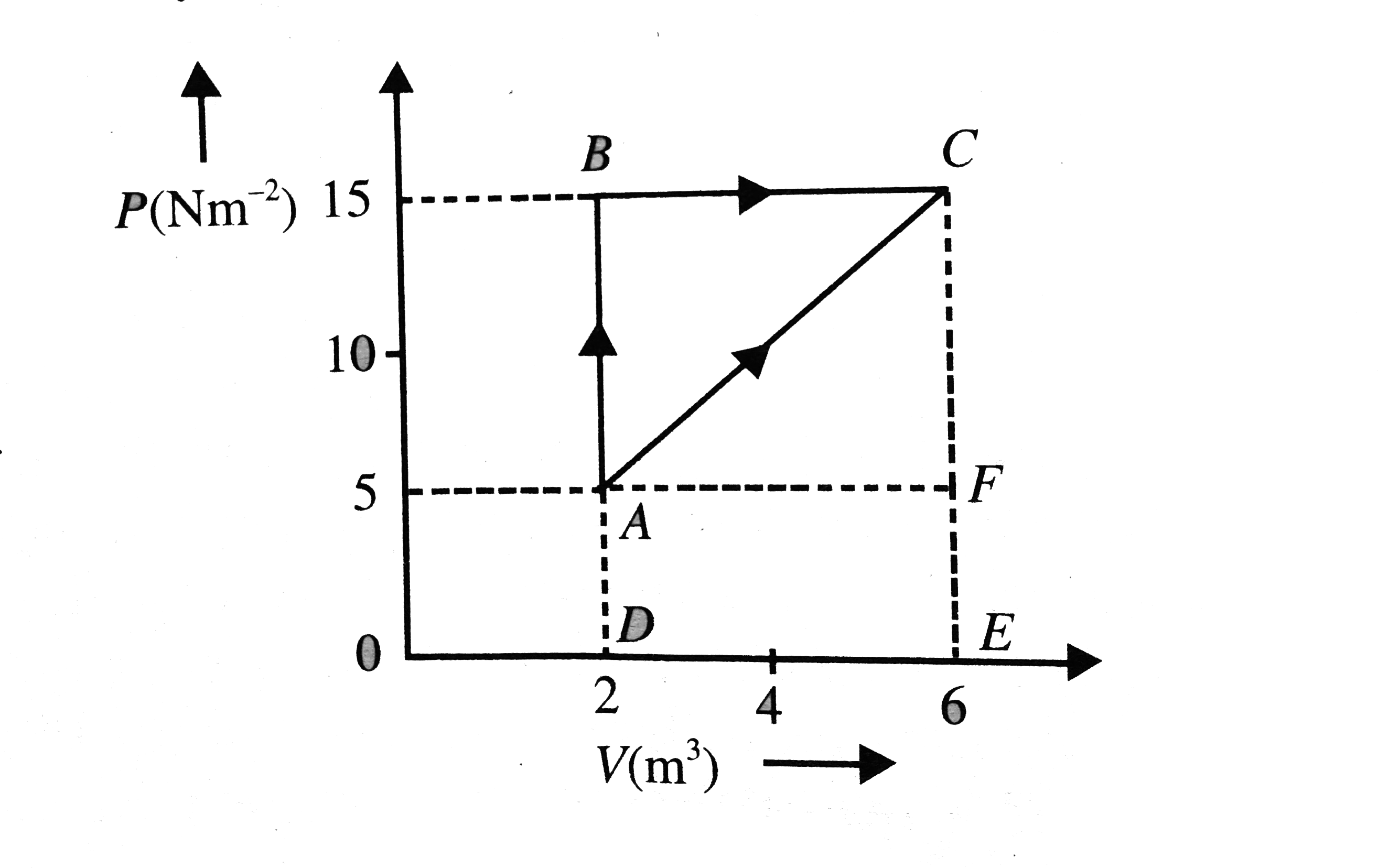
View SolutionThe given figure shown a change of state A to state C by two paths ABC and AC for an ideal gas. Calculate the : (a) Path along which work done is least. (b) Internal energy at C if the internal energy of gas at A is 10 J and amount of heat supplied to change its state to C through the path AC is 200 J . (c) Amount of heat supplied ot the gas to go from A to B, if internal energy of gas at state B is 10 J .
View SolutionA system is taken from state a to state c along the path adc (figure). The amount of heat absorbed is 10cals and work done on the gas is 138J. Calculate the work done on//by the gas when 20cals of heat are absorbed in taking the system from state a to state c along the path abc
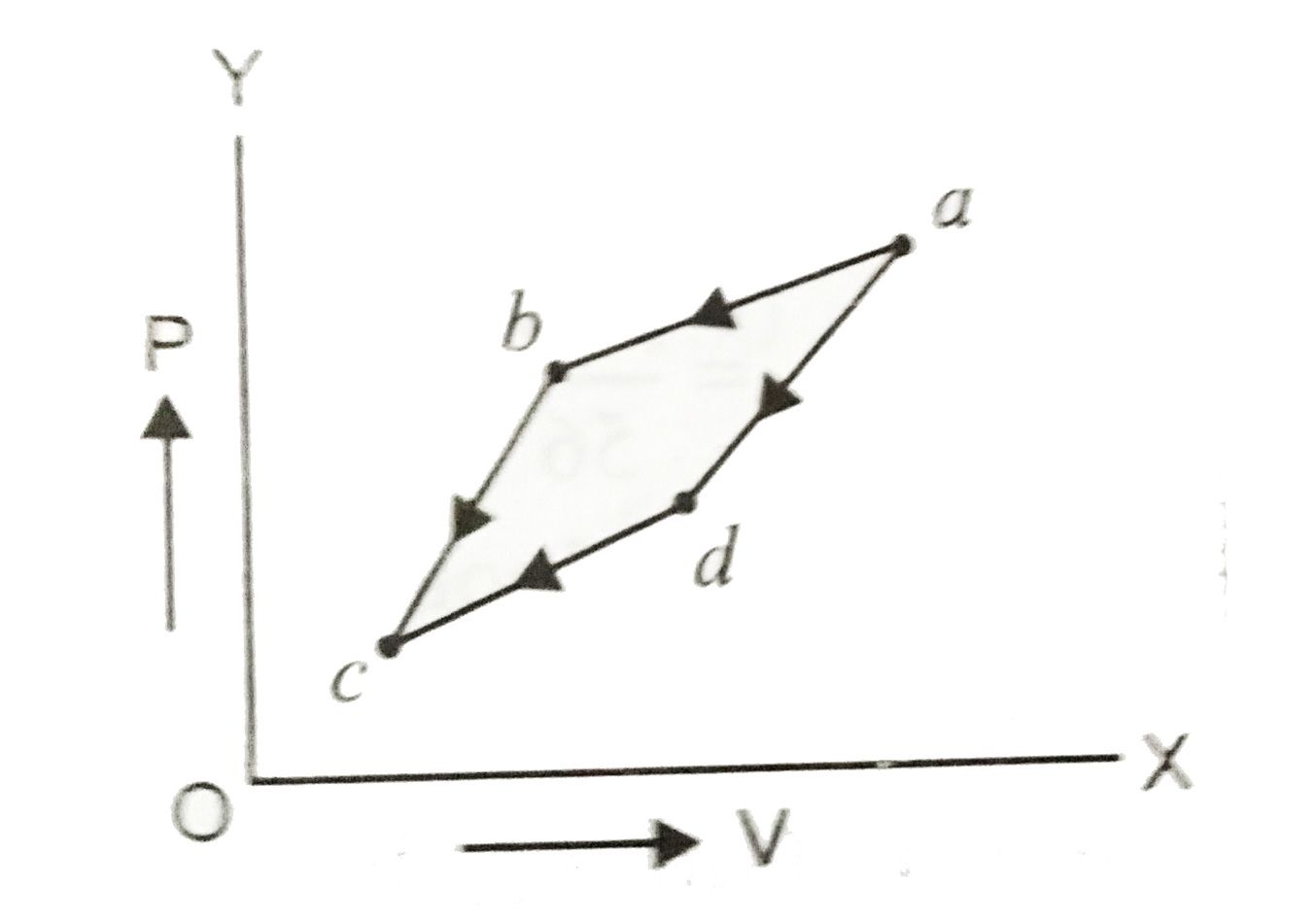
View Solution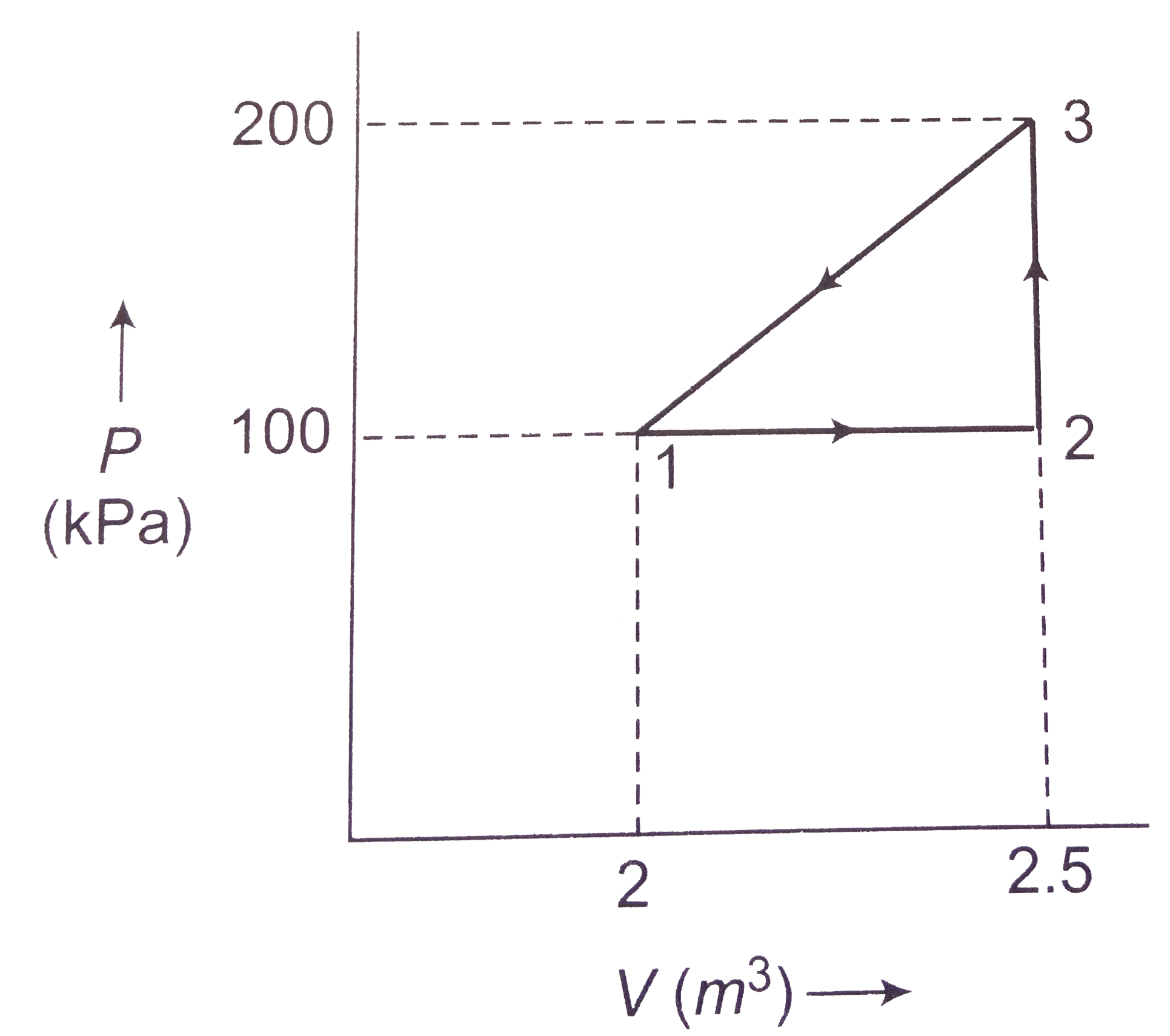
In the figure an ideal gas changes is state from state A to state C by two paths ABC and AC.
(a) Find the path along which the work done is least.
(b) The internal energy of the gas at A is 10 J and the amount of heat supplied to change its state to C through the path AC is 200 J. Calculate the internal energy at C.
(c) The internal energy of the gas at state B is 20 J. Fid the amount of the heat supplied to gas to go from A to B.
View SolutionWhen a system is taken from state 'a' to state 'b' along the path 'acb', it is found that a quantity of heat Q = 200 J is absorbed by the system and a work W = 80 J is done by it. Along the path 'adb', Q = 144 J
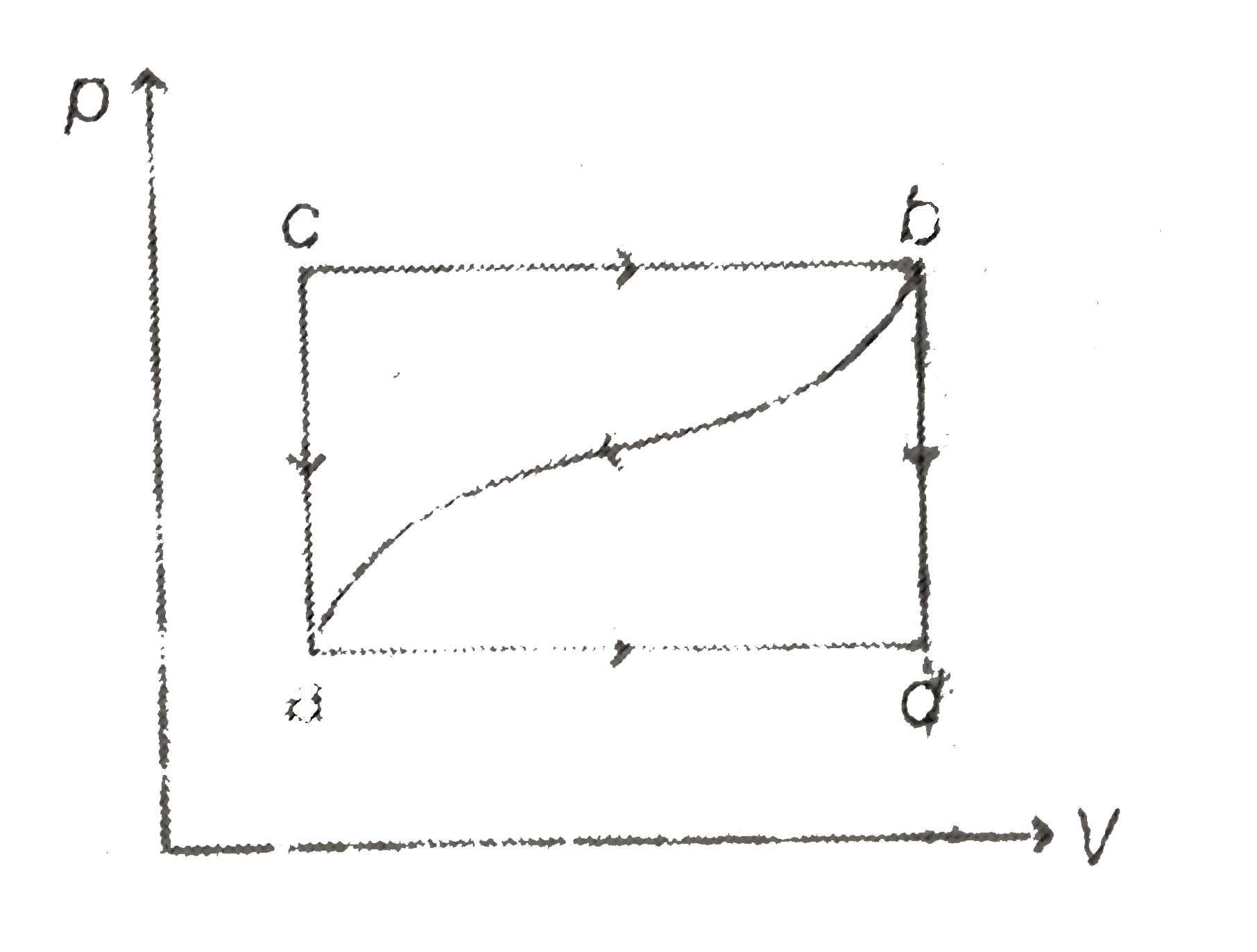
In the above question, if Ud=88J, heat absorbed for the path 'db' is
View SolutionWhen a system is taken from state A to state B along path ACB as shown in figure below, 80J of heat flows into the system and the system does 30J of work.
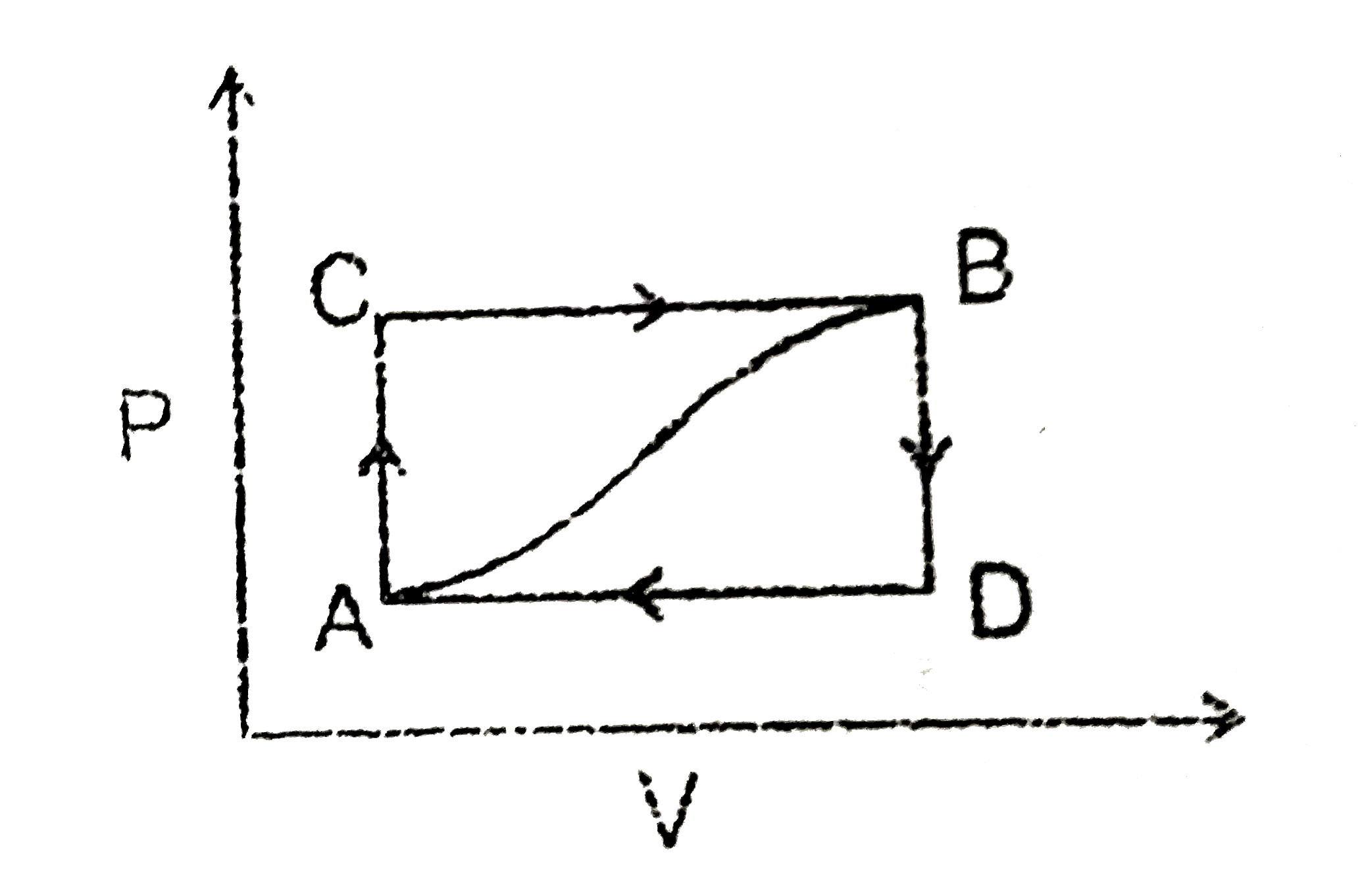
How much heat flows into the system along path ADB if the work done by the system is 10J:
View SolutionIn the adjoinign P-V diagram, 100 J of heat is given in taking a system from A to C along the path ADC and 50 J of work is done by system in this path.
a. If the work done by the suystem is 15 J along the path ABC, then how much heat is to be given in taking the system from A to C along ABC?
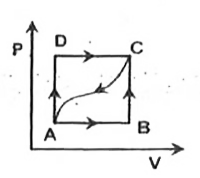
b. How much heat will be absorbed or given out if the work done on the system along the curved path from CA to A is 15 J?
c. If UB−UA=40J, then how much heat will be absorbed in each process AB and BC?
View Solutionएक आदर्श गैस को, चित्र में दर्शाये गये अनुसार चक्रीय प्रक्रम abca से गुजारा जाता है। ca पथ के अनुदिश गैस की आन्तरिक ऊर्जा में परिवर्तन -180 J है। ab पथ के अनुदिश, गैस 250 J ऊष्मा अवशोषित करती है तथा bc पथ के अनुदिश, गैस 60 J ऊष्मा अवशोषित करती है तो. पथ abc के अनुदिश, गैस द्वारा किया गया कार्य है
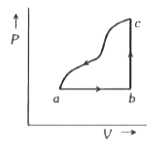
View Solutionचित्र में दर्शाये गये एक निकाय को दो पथों adc तथा abc द्वारा स्थिति a से स्थिति c में ले जाया जाता हैं। a पर आंतरिक ऊर्जा U+(a)=10J हैं। पथ adc की दिशा में अवशोषित ऊष्मा की मात्रा δQ=50J तथा किया गया कार्य δW1=20J जबकि पथ abc की दिशा में अवशोषित ऊष्मा की मात्रा δQ2=36J हैं। पथ abc की दिशा में कार्य की मात्रा है
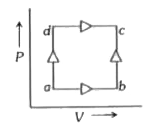
View SolutionIn the indicator diagram, we have
(a) Change in internal energy along ABC is 10 J.
(b) Work done along path AB = 20 J.
UC=5J.
(d) Heat absorbed by the system along path AD is 5J.
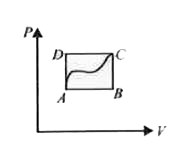
(i) Change in internal energy along the path CDA.
(ii) Heat given to the system along path ABC.
(iii) Value of UA.
(iv) change in internal energy along AD.
View Solutionएक आदर्श गैस को, चित्र में दर्शाये गये अनुसार चक्रीय प्रक्रम abca से गुजारा जाता है। ca पथ के अनुदिश गैस की आन्तरिक ऊर्जा में परिवर्तन -180 J है। ab पथ के अनुदिश, गैस 250 J ऊष्मा अवशोषित करती है तथा bc पथ के अनुदिश, गैस 60 J ऊष्मा अवशोषित करती है तो. पथ abc के अनुदिश, गैस द्वारा किया गया कार्य है

View SolutionWhen a process is taken from process abc 100 J of heat is absorbed by system and 50 J of work is done by it. If work done in process adc is 60 J, then heat absorbed in this process

View SolutionWhen a system is taken from state 'a' to state 'b' along the path 'acb', it is found that a quantity of heat Q = 200 J is absorbed by the system and a work W = 80 J is done by it. Along the path 'adb', Q = 144 J In the above question, if U_(d)=88J , heat absorbed for the path 'db' is
View SolutionWhen a system is taken from A to C through path ABC, 10 J of heat flows to the system and 4 J of work is done by the system.

How much heat flows into the system in path ADC, if the work done by the system is 3 J ?
View SolutionA system is taken from state a to state c by two paths abc and abc as shown in the figure. The internal energy at a is Ua=10J. Along the path adc the amount of heat absorbed δQ1=50J and the work obtained δW1=20J whereas along the path abc the heat absorbed δQ2=36J. The amount of work along the path abc is

View Solution
